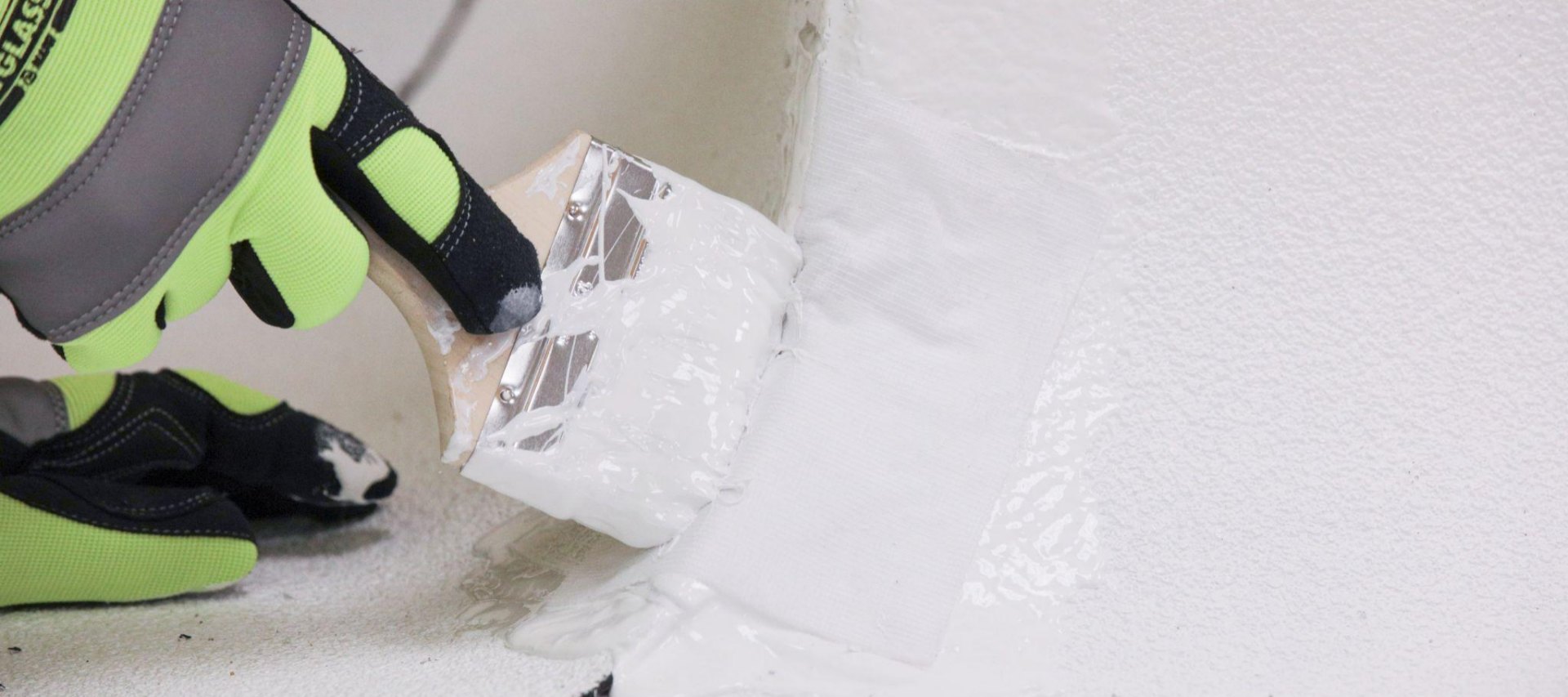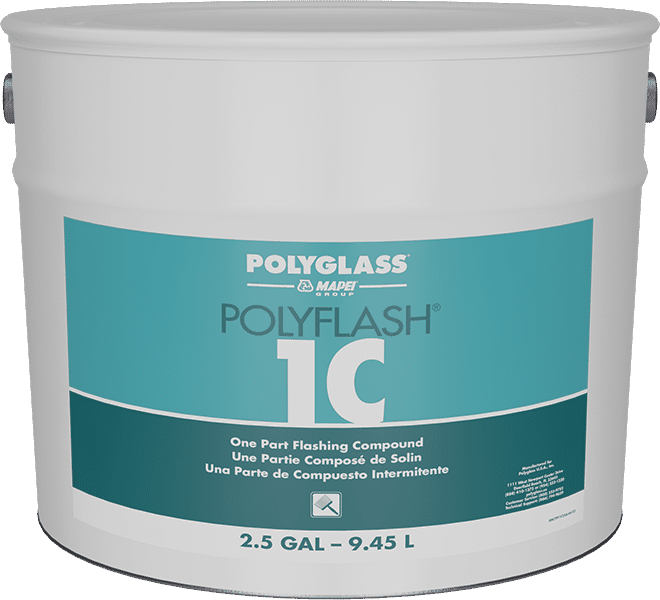
In the world of roofing and waterproofing, tradition often reigns supreme. Roofing designers and contractors frequently find themselves mired in the past, relying on conventional flashing systems. While the field of the roof garners initial attention in membrane system design, the importance of membrane flashings should not be underestimated. Over the past few decades, manufacturers have introduced innovative solutions for these critical components in the form of fluid-applied flashings, sometimes referred to as liquid-applied flashings.
When discussing fluid-applied flashings, two key chemistries come to the forefront: water-based acrylic roof coatings and urethanes, PMMA, and other similar materials. Historically marketed by roofing manufacturers as suitable options for challenging details and low flashing conditions, these roofing materials have since become commonplace in traditional membrane systems. In this blog post, we’ll delve into the world of fluid-applied flashings and explore why they have become a roofing system’s best friend.
Defining Flashings: The Unsung Heroes of Roofing
Before we dive deeper into the advantages of fluid-applied flashings, let’s establish what flashings are. In the realm of roofing and waterproofing, flashings refer to secondary components of the roof related to terminations, through-roof penetrations, and adjoining wall conditions. Traditionally, these flashings are sealed or “flashed” using formed sheet metal, membranes, or, more recently, reinforced fluid-applied materials. For this blog post, our focus will be on fluid-applied flashing options.
It’s widely recognized in the industry that the most critical and leak-prone areas of a commercial roof system are the flashing details. While traditional flashing details often rely on formed metal sealed with membrane strips, they can perform well when properly designed and installed. However, they often require additional mastics to ensure watertightness. This is where fluid-applied flashing systems come into play, revolutionizing the way we approach these critical details.
Why Opt for Fluid-Applied Flashings in Your Roofing Design?
You may be wondering why you should consider incorporating fluid-applied flashings into your commercial roofing design. After all, this adds another layer of complexity, right? Well, it does, but the performance advantages are well worth it. Every commercial roof coating project presents its unique set of challenging detail conditions, such as low flashing heights or oddly shaped penetrations, where fluid-applied flashing systems shine. Moreover, the use of fluid-applied flashings is often covered by the membrane manufacturer’s warranty, providing an additional layer of assurance.
Another compelling reason to choose fluid-applied flashings is their minimal to zero ongoing maintenance requirements, which can bring comfort and peace of mind to building owners and facility staff. Designing with their convenience and ease in mind is a key consideration.
Exploring Product Choices: Polyflash 1C and PMMA
Now, let’s delve into a couple of common product choices in the realm of commercial roof coatings offered by Polyglass® Polyflash 1C and PMMA. Both options are excellent choices for fluid-applied flashing work, each with its unique advantages.
PMMA (Poly Methyl Methacrylate)
PMMA is a versatile flashing component used in waterproofing and for various applications, such as pedestrian and automotive deck systems. Its chemistry aligns with products used on horizontal surfaces but is formulated to adhere to vertical surfaces without sagging. While not as commonly used, PMMA can be advantageous for “base flashings” at horizontal to vertical transitions. Its roller-friendly application makes it ideal for larger areas, ensuring quick and efficient installation.
However, working with PMMA does require some adjustments to the material’s pot life to allow for effective installation without rushing or excessive manpower. PMMA is available in various colors, which can be useful for matching base flashing conditions to complement an exterior finish. But, be mindful of storage, handling, and mixing, as mishandling can result in costly waste. Meticulous surface preparation and the use of a primer are also essential with PMMA.
Features of PMMA Flashing
- UV Resistant: PMMA Flashing can withstand the damaging effects of UV radiation, making it ideal for applications in high UV environments where it remains durable when exposed to sunlight.
- Ease of Application: PMMA Flashing is user-friendly and straightforward to apply, simplifying the installation process for various applications.
- Flexibility: PMMA Flashing offers flexibility, allowing it to adapt to different shapes and requirements, making it versatile in various settings.
- Durability: PMMA Flashing is highly durable, ensuring that it maintains its integrity and performance over time, even in challenging conditions.
Polyflash 1C

PolyFlash 1C stands as a cutting-edge, single-component silane-modified polyurethane flashing material meticulously engineered to seal and waterproof an array of roofing details, flashings, and penetrations on a diverse range of roof surfaces.
This high-quality roof coating is ready for use after simple stirring, eliminating the need for measuring catalysts or batching. With a longer working time and a VOC-compliant formula, it’s suitable for even the most odor-sensitive applications.
Polyflash 1C, a modified Silane chemistry, does not require a primer and bonds effectively to various surfaces in the built environment. It is ideal for both large- and small-scale flashing applications, serving as a flashing system for wall flashings or a reinforcing system for various roof details. It quickly tacks, preventing water intrusion within seconds of application.
When used in conjunction with PolyBrite® reinforcing polyester fabric, this product has the potential to effectively address both common and complex flashing requirements, offering a lasting solution.
Depending on project conditions, embedding fabric and applying a second roof coat may be recommended. The product can even bond to surfaces with moisture or underwater, making it an ideal material for service and maintenance crews. The only drawback is its limited color variety, as it is only available in a glossy light color, which complements most color palettes. If texture is needed, granules or sand can be quickly added to achieve the desired texture or color.
Fluid-Applied Flashings: Your Roofing System’s Best Friend
When it comes to roofing penetrations and flashing details, fluid-applied flashing systems offer a high-performance alternative to traditional membrane details. These systems, including Polyglass’ Polyflash 1C and PMMA, provide roofing designers and contractors with versatile solutions that can enhance the performance and durability of their projects.
Fluid-applied flashings are the future of roof coating systems, providing a range of benefits, from ease of installation to long-term reliability. So, the next time you’re designing a commercial roofing system, consider the advantages of fluid-applied flashings and think of Polyglass as your trusted partner in fluid-applied systems for all your roofing and waterproofing needs.